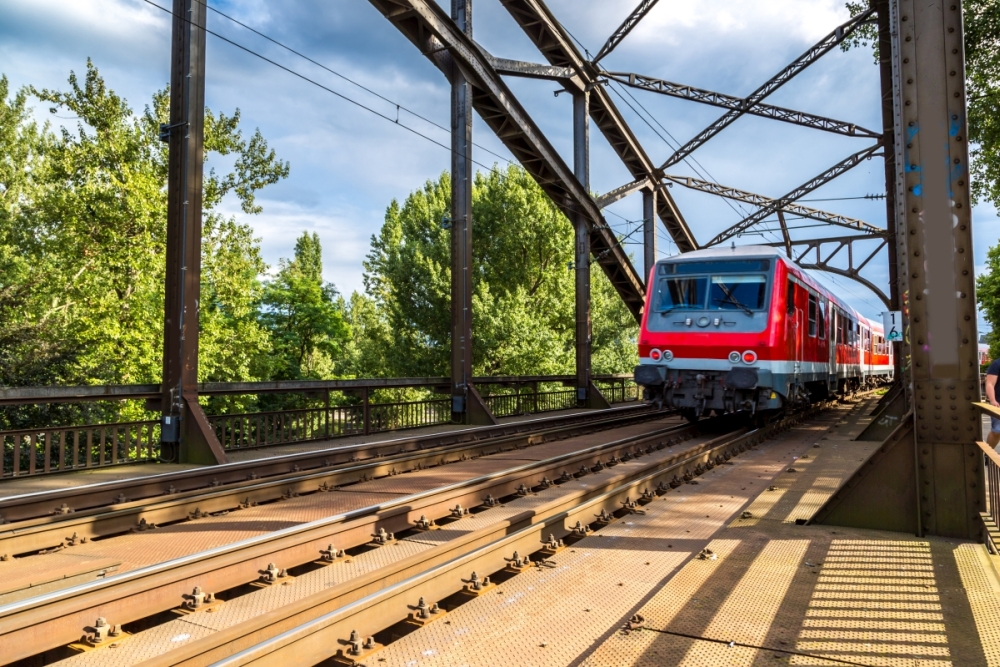Optimized noise reduction measures on railroad bridges
In urban areas, the immission of traffic-related noise increases as a consequence of the concentration of living areas and infrastructure. Noise emission from rail traffic increases on railway bridges due to structure-borne noise of the vibrating bridge, e.g. due to large sound-radiating surfaces or small vibration attenuation in case of missing ballast bed. Common measures such as noise barriers can sometimes even increase the noise emission because of their large sound-radiating surfaces. This project addressed noise reduction measures for existing railway bridges. Available solutions include e.g. rail dampers or sub-ballast mats (measures on superstructure). Other measures such as rails embedded in bridge structure affect the bridge structure itself and are thus not suited for reconstruction. Known problems include underestimation of sound emissions, not sufficiently known mutual interaction between several measures, or missing adjustment of the measures to account for bridge structure-borne noise.
The aim of the project was an exploration study on the effectivity of optimized vibro-acoustic measures for railway bridges. The project focused on the application on existing railway bridges, and thus primarily on measures at track superstructure. A combination of several measures and their mutual influence were analyzed using a realistic computation model. Properties of vibration-damping materials were tested across an extended frequency range and used in the simulation. Requirements for optimized material properties were stated and an effective combination of several measures was proposed.
AIT was project leader and focused on the simulation of bridge structure-borne noise in combination with coupling of finite and boundary element modelling. Based on the in deep simulation a model for sound emission for bridges was invented and further proposals on bridge dynamics/acoustics were (successfully) admitted (e.g. Assets4Rail [2018], AcouBridge [2020]).
Funded by the Federal Ministry for Climate Protection, Environment, Energy, Mobility, Innovation and Technology (BMK) and the Austrian Research Promotion Agency (FFG) as part of the "Mobility of the Future" 2015 program.




